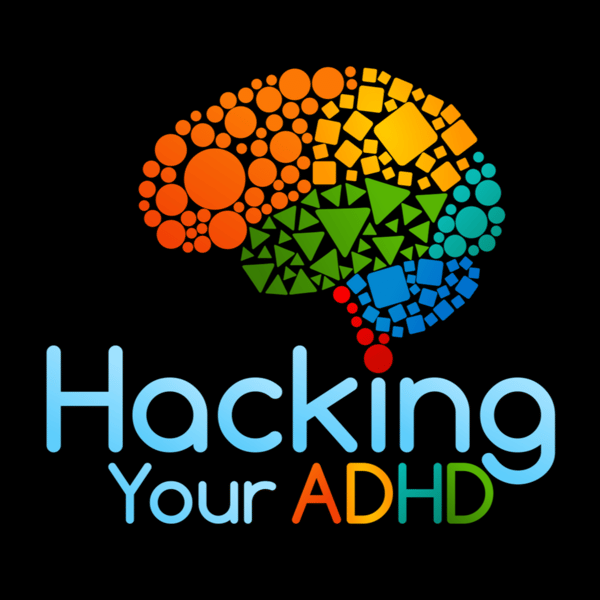Decoding Research
Hacking Your ADHD
William Curb
4.8 • 702 Ratings
🗓️ 14 October 2024
⏱️ 19 minutes
🧾️ Download transcript
Summary
Hey Team!
We’re diving right back into the world of ADHD research, continuing on from what we were talking about a few episodes back. In this episode, we’re going to be more focused on what goes into making ADHD research reliable. I go in-depth into what you can expect to find when reading a study and then also into what thing to look out for when trying to determine what’s really going on in those studies.
We’ll discuss how to navigate the sometimes confusing world of peer-reviewed journals, why sample sizes matter, and what to watch out for when it comes to conflicts of interest (I mean, everyone is interested in how ADHD research is funded, right?).
This piece was also initially going to cover misinformation, but with how much ended up going into everything else, I’m saving that for next week.
If you’d like to send me a question answer on the show feel free to head over to hackingyouradhd.com/contact and click the orange button
Support me on Patreon
Ask me a question on my Contact Page
Find the show note at HackingYourADHD.com/198
Check out Sunsama
This Episode's Top Tips
-
- The first step in examining a research paper’s credibility is to ensure that it is peer-reviewed. The peer-review process will cover many of the other steps that we discussed in this episode. While there is value in some non-peer-reviewed work, it’s important that we approach it with a skeptical lens.
- However, with that first tip, we should also know that we shouldn’t view peer-reviewed journals as a beginner’s source. They are written with the expectation of other experts as the intended audience, and without the prerequisite knowledge, it can be easy to misinterpret what is being said.
- One of the largest concerns about ADHD research comes from worries that pharmaceutical money will introduce bias into many of the studies; however, most research is actually funded through government grants, and the peer-review process is designed to help identify conflicts of interest and eliminate any bias that may be present.
Transcript
Click on a timestamp to play from that location
| 0:00.0 | Welcome to Hacking Your ADHD. |
| 0:06.1 | I'm your host, William Curb, and I have ADHD. |
| 0:09.1 | On this podcast, I dig into the tools, tactics, and best practices to help you work with your ADHD brain. |
| 0:15.0 | Hey, team, we're diving right back into the world of ADHD research, continuing on from what we were talking about a few episodes |
| 0:21.1 | back. So for this episode, we're going to be more focused on what goes into making ADHD |
| 0:26.0 | research more reliable. I go in depth into what you can expect to find when reading a study, |
| 0:30.6 | and then also what things to look out for when trying to determine what's going on in those |
| 0:35.3 | studies. We'll discuss how to navigate a sometimes |
| 0:38.1 | confusing world of what a peer-reviewed journal is, why sample sizes matter, and what to watch |
| 0:43.3 | out for when it comes to conflicts of interest. I mean, everyone's interested in how ADHD |
| 0:48.2 | research is funded, right? This piece was also initially going to cover a bunch of stuff about |
| 0:51.8 | misinformation, but with how much ended up going into everything else, I'm saving that for next week. If you'd like to follow along |
| 0:57.5 | on the show notes page, you can find that at hacking your ADHD.com slash 198. All right, keep |
| 1:03.6 | on listening to find out about the insides of ADHD research. In the last episode in this series, we discussed the kinds of ADHD research there is. |
| 1:16.6 | But I think we should also work on understanding what makes good research because not all research is created equal. |
| 1:22.6 | When we look into how to evaluate research, often the first thing we hear is that we need to look for peer-reviewed journals. |
| 1:30.1 | Peer review means that other experts in the field, who weren't involved in that particular study, have evaluated it before it was published. |
| 1:37.0 | They check whether the research methods are sound, whether the data supports the conclusions, and if the study adds something valuable to the field. |
| 1:45.6 | As a casual reader, |
| 1:50.4 | ensuring research is peer-reviewed will probably be our most critical step, because we're not equipped to make those judgments nearly as well as someone within the field. And we'll talk more about |
| 1:55.6 | what makes good research in a minute. But before we go into that discussion of what makes good research, |
| 2:00.5 | I want to play with |
... |
Transcript will be available on the free plan in -163 days. Upgrade to see the full transcript now.
Disclaimer: The podcast and artwork embedded on this page are from William Curb, and are the property of its owner and not affiliated with or endorsed by Tapesearch.
Generated transcripts are the property of William Curb and are distributed freely under the Fair Use doctrine. Transcripts generated by Tapesearch are not guaranteed to be accurate.
Copyright © Tapesearch 2025.

